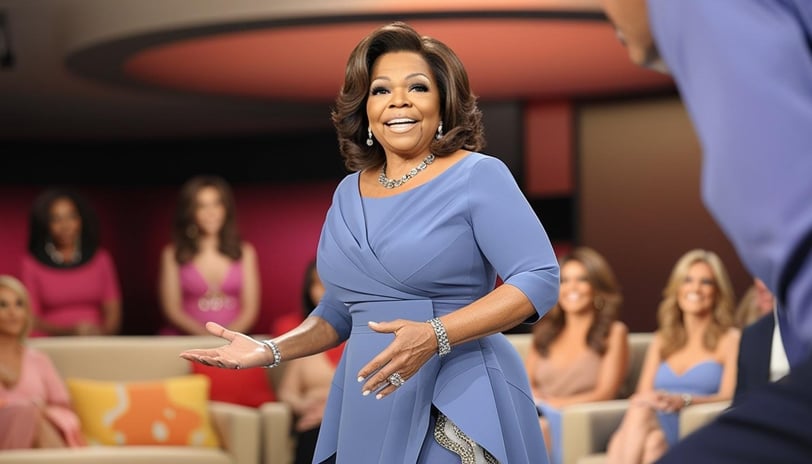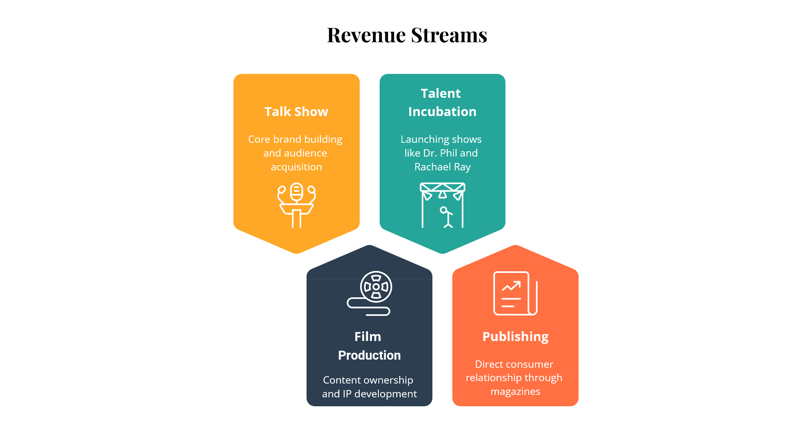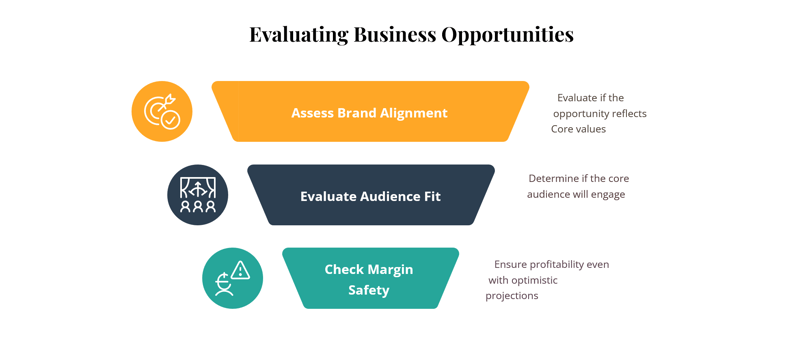How Oprah Winfrey Built Her $3 Billion Empire: Lessons for Entrepreneurs
Discover how Oprah built her $3B empire through smart ownership moves, strategic pivots, and calculated risks. Real business lessons without the fluff.
ENTREPRENEURS STORIES


How Oprah Winfrey Built Her $3 Billion Empire: Lessons for Entrepreneurs
Oprah Winfrey's journey from rural Mississippi to becoming the first Black woman billionaire isn't just an inspiring success story—it's a masterclass in business strategy, brand building, and resilience that every entrepreneur can learn from. While most know her as a talk show host, her true genius lies in the business decisions that transformed her from talent-for-hire to media mogul.
Let's break down what really happened behind the scenes of Oprah's $3 billion empire, focusing on the setbacks, smart moves, and unexpected turns that shaped her business success.
The One Sentence That Changed Everything
When negotiating the syndication of her Chicago talk show in the 1980s, Oprah made a decision that would completely change her financial trajectory: she demanded ownership rights to her show.
Unlike other TV personalities who accepted standard talent contracts, Winfrey created Harpo Productions and insisted on 100% ownership. This wasn't just about creative control—it was about controlling the money.
This single clause allowed her to:
Keep the licensing fees from stations airing her show
Control advertising revenue
Own global distribution rights
Build wealth through equity, not just salary
This ownership model became so successful that talents like Dr. Phil and Rachael Ray would later use this same blueprint.
Quick Takeaway: Look for ways to own your value creation rather than just getting paid for your time or talent. Whether you're a content creator, consultant, or product developer, ownership creates long-term wealth that employment can't match.
Harpo Productions: The Business Engine
In 1986, Oprah founded Harpo Productions, turning what could have remained just a talk show into a media powerhouse. Unlike competitors, Harpo wasn't built around a single personality or product—it was designed as a platform for multiple revenue streams.
Harpo's business model included:
Quick Takeaway: Don't build a business dependent on a single product, platform, or revenue source. Create multiple streams that can support each other during market shifts.
The OWN Network: When Success Meets Failure
In 2011, the launch of the Oprah Winfrey Network (OWN) nearly derailed her entire business empire. Despite securing $189 million in investment from Discovery Communications, OWN lost a stunning $330 million in its first year of operation.
What went wrong? Three key mistakes:
Audience misalignment: Programming targeted Oprah's upscale demographics rather than actual cable viewers
Leadership overload: Oprah tried to be both CEO and creative director, causing decision bottlenecks
Brand confusion: Viewers expected to see Oprah on screen but got programming that felt disconnected from her core appeal
Many business owners would have cut their losses, but Oprah took a different approach to handle this crisis.
The Pivot That Saved OWN
Between 2013-2015, Oprah executed a turnaround strategy that transformed OWN from a financial black hole to a profitable network. Her approach offers valuable lessons for any business facing potential failure:
Content reboot: She greenlit shows like "Iyanla: Fix My Life" that balanced her brand values with mass appeal
Strategic partnerships: Partnering with Warner Bros. to co-produce scripted series reduced financial risk
Leadership restructuring: Hiring Discovery's Peter Liguori as CEO allowed Oprah to focus on content rather than operations
By 2015, OWN's prime-time ratings were up 20% year-over-year, and the network had become profitable.
Quick Takeaway: When facing business failure, assess what's worth saving, be willing to bring in outside expertise, and focus your personal energy where you add the most value.
The Weight Watchers Investment: Contrarian Business Thinking
In 2015, when Weight Watchers was losing users to fitness apps and trendy diet programs, Oprah made a bold move: she invested $43 million for a 10% stake in the struggling company.
Many business analysts questioned this decision, but Oprah saw something others missed: an opportunity to align her personal credibility with a brand that needed revitalization.
By sharing her own weight-loss journey in campaigns and integrating the company into her broader wellness messaging, she helped trigger a remarkable 347% stock surge within just six months. By 2025, her initial investment was worth approximately $450 million—a 946% return.
Quick Takeaway: Sometimes the best business opportunities aren't the obvious ones or the trendy startups, but established businesses with strong foundations that need fresh energy and perspective.
O, The Oprah Magazine: Content as Commerce
While many celebrities have failed at magazine publishing, Oprah created one of the most successful magazine launches in history with O, The Oprah Magazine (2000-2020).
What made this venture different? Two key strategies:
Monetizing trust: The "Oprah's Favorite Things" franchise within the magazine generated over $50 million in annual retail sales, creating a direct link between content and commerce
Platform flexibility: When print declined, the brand successfully transitioned to Oprah Daily digital, maintaining 8 million monthly unique visitors
This publishing success demonstrates how content and commerce can work together when built around a trusted voice.
Quick Takeaway: Build products that convert your audience's trust into revenue streams without sacrificing the authenticity that created that trust in the first place.
Oprah's Decision-Making Framework
Behind Oprah's business success is a decision-making system that guided her choices across varied industries. Three principles stand out:
The 51% Rule
For every major business decision, Oprah required that it align at least 51% with her core mission of empowerment and education. This filter helped her decline lucrative opportunities that didn't fit her long-term vision, while saying yes to projects with less immediate payoff but stronger brand alignment.
Controlled Failure Zones
Oprah allocated 10-15% of resources to experimental projects with clearly defined "kill switches." This approach allowed her to try new ideas while limiting potential damage. Even the OWN network crisis, though painful, was financially survivable because of how she structured her overall business.
The Three-Axis Evaluation
When considering new ventures or facing difficult pivots, Oprah's team evaluated opportunities across three dimensions:


Quick Takeaway: Create a decision-making framework that balances short-term opportunities against long-term vision. Document your criteria so you can make consistent choices even under pressure.
Strategic Philanthropy as Business Strategy
Oprah's philanthropic work, particularly the Oprah Winfrey Leadership Academy for Girls in South Africa, is often viewed as separate from her business empire. However, a closer examination reveals how her $400 million in charitable investments served dual purposes:
Social impact: Educating 500 South African girls annually fulfilled her mission-driven goals
Brand reinforcement: These efforts humanized the Oprah persona while creating content opportunities (the academy stories later inspired the "Greenleaf" series on OWN)
Unlike philanthropy that disconnects from core business strengths, Oprah's giving aligned with her media expertise and amplified her brand story.
Quick Takeaway: When designing your company's social impact efforts, look for ways they can authentically connect to your core business strengths rather than existing as separate charitable activities.
The Power of Strategic Ownership
Perhaps the most valuable lesson from Oprah's career is that true wealth comes from controlling your distribution channels and intellectual property.
When signing her syndication deal, Oprah recognized something fundamental: the person who owns the distribution often makes more than the person creating the content. By insisting on ownership, she positioned herself to benefit from every revenue stream her content generated.
For today's digital entrepreneurs, this translates to:
Building and owning your email list rather than relying solely on social platforms
Creating owned media channels instead of just renting attention
Developing intellectual property that generates passive income
Investing in technologies or platforms you use rather than just being a customer
Learning from Oprah's Failures
While Oprah's success gets attention, her setbacks offer equally valuable lessons. Beyond the OWN network struggles, she experienced:
Failed film projects that cost millions but taught her about production economics
TV shows that didn't connect with audiences despite strong concepts
Product lines that didn't meet sales projections
What separates Oprah from many entrepreneurs is how she handled these moments. Rather than hiding failures, she often discussed them publicly, framing them as "tuition paid for my business education."
This transparency accomplished two things: it maintained trust with her audience and it created space for recovery and reinvention without shame.
Applying Oprah's Principles to Your Business
So how can entrepreneurs apply these lessons? Here are five actionable strategies based on Oprah's business playbook:
1. Identify Your Ownership Opportunity
What's the equivalent of Oprah's syndication rights in your business? Look for areas where you're creating value but haven't secured ownership. This might be intellectual property, customer relationships, or distribution channels.
2. Create Your Pivot Matrix
Before your next major business decision, create your own version of Oprah's three-axis evaluation. Define what brand alignment means for you, how you'll measure customer fit, and what financial safety looks like in your context.
3. Design Controlled Experiments
Allocate a specific percentage of your resources (time and money) to testing new ideas with clear parameters for success. Define in advance what metrics would make these experiments worth continuing or when you'll pull the plug.
4. Build Multiple Revenue Streams
List all potential ways your core business could generate income beyond your primary product or service. Then prioritize one additional revenue stream to develop in the next six months.
5. Align Values With Value Creation
Identify the overlap between what you care about and what generates profit. This intersection is where sustainable business growth happens.
The Real Lesson of Oprah's Empire
Oprah Winfrey's $3 billion empire wasn't built through a linear path to success. It was created through:
Strategic ownership decisions that secured long-term value
Adaptive responses to failure that turned setbacks into stepping stones
Brand-backed investments that leveraged her credibility in new markets
A decision-making framework that balanced mission with profit
For entrepreneurs, the key lesson isn't about avoiding challenges but about handling them strategically. Business success isn't about perfect execution—it's about making smart pivots when things don't go as planned.
Oprah's journey reminds us that entrepreneurship isn't about avoiding storms but learning to navigate through them—ideally while owning the rights to the whole journey.


What I Know For Sure: Tenth Anniversary Edition
A beautifully packaged and updated edition of the #1 New York Times bestselling book celebrating a decade of timeless wisdom, with new content from Oprah Winfrey
Explore more


